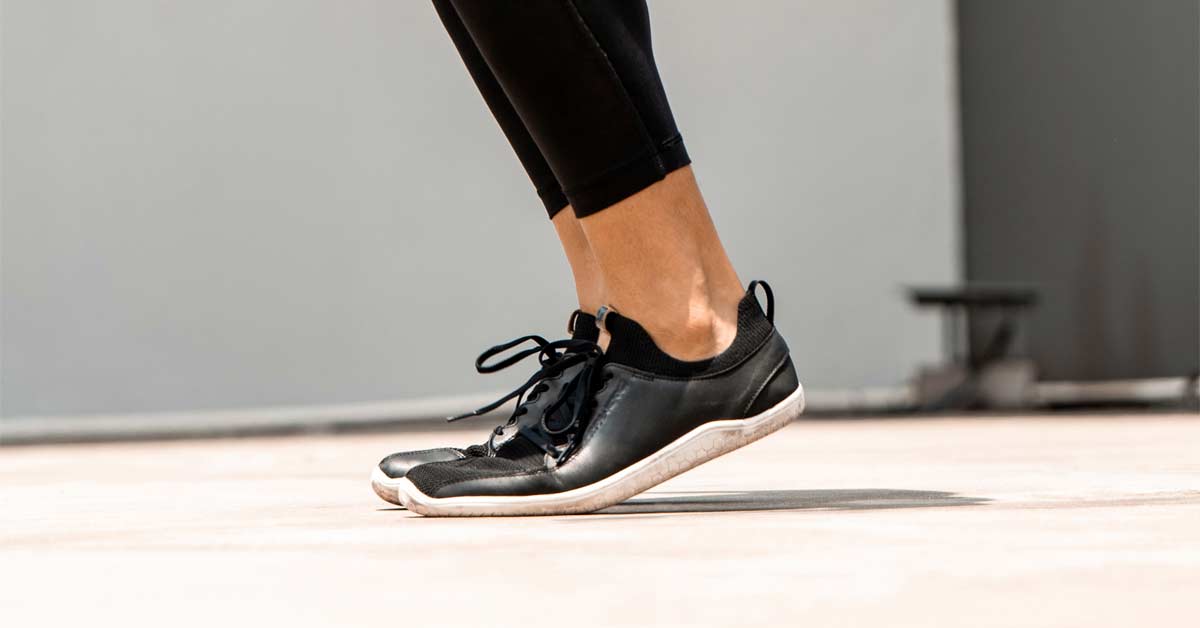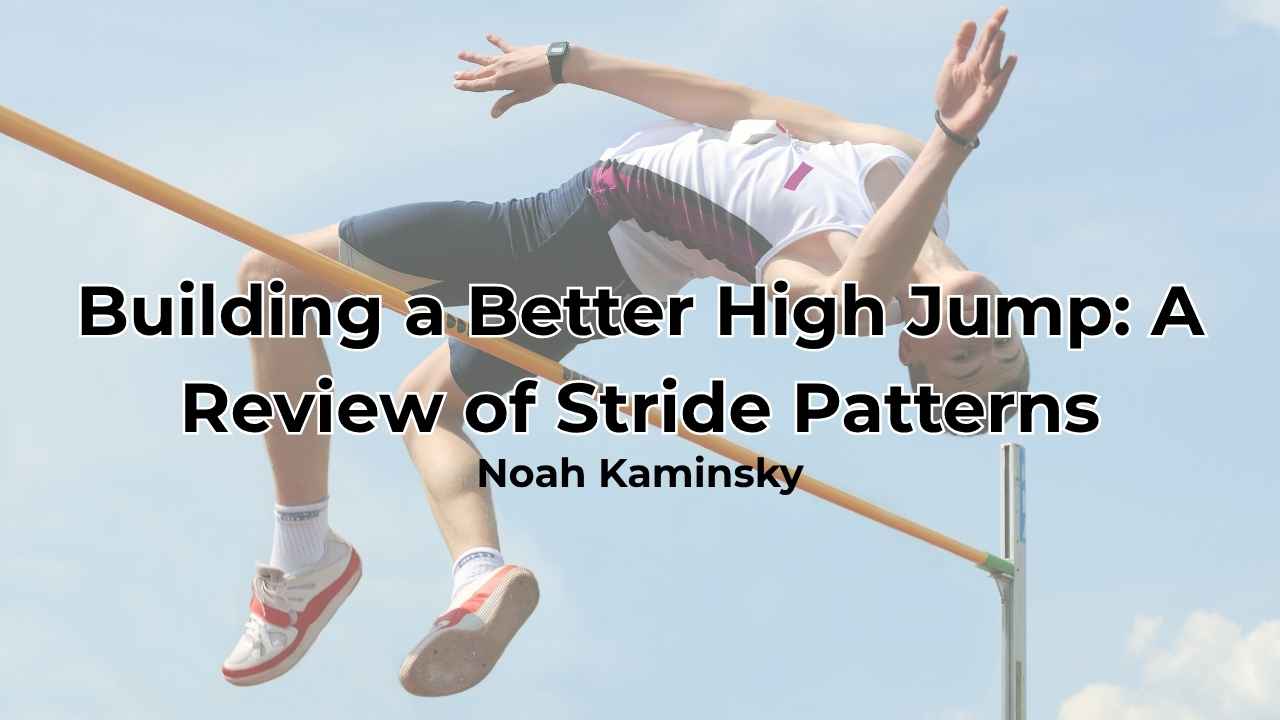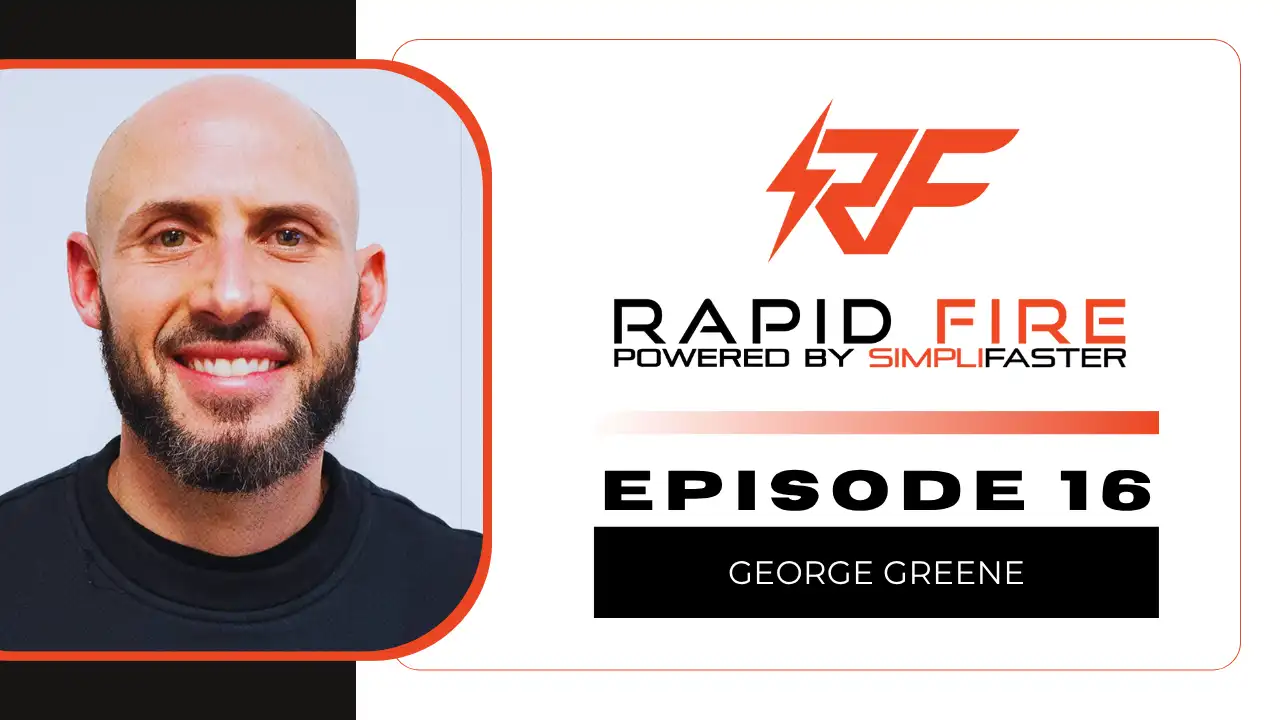Lower limb stiffness is an interesting balance—while I want my athlete’s ankles to be stiff enough to get good rebound/push off from the floor to produce power, I don’t want their ankles to be like bricks! Ankle range of motion is key for athletes: they need to be able to dorsiflex, invert, and evert effectively, so I don’t want their ankles and feet to be so stiff they can’t move well. On the flipside, if there is no ankle stiffness, the foot has a hard time producing force: the elastic energy produced from plyometrics is dissipated as heat because the athlete can’t rebound/push off from the ground quickly enough to use this energy created from the stretch shortening cycle.
So, here’s the debate in my head:
- Do we seek to make an athlete’s ankle/foot hyper-mobile so they can actually flex/extend/invert/evert correctly?
- Or do we work on training ankles that are stiffer and can produce more force, therefore improving athletic ability in literally every athletic movement possible?
The answer lies somewhere in the middle. I want my basketball players to have good range of motion in the ankle and foot joints, while also having the ability to produce force quickly (through stiffness) without the use of deep knee flexion and hip extension.
Ankle range of motion is key for athletes, says @SCoach_Aldo. Share on XPolish Boxes and Low Box Training
I was pretty hyped when I read about Polish boxes and the linked Lee Taft article on low boxes as a tool for producing lower limb force. My only issue was that I wanted to implement the newly acquired knowledge and exercises now, and the Polish boxes looked pretty pricey and hard to come by. Looking at what our weight room did have, I came across my PRIME Squat Wedges—the angle looked very similar to the Polish box so I knew they would work. Also, related to Lee’s article, I knew that our DC Blocks would work as low boxes.
The first time I had an athlete perform some related exercises was with an athlete who really needed to develop stiffness and more force from his lower limbs. This particular athlete has very flat feet which, as we know, aren’t optimal for force development. Flat feet are better for force absorption, and high arches are more advantageous for force production. I feel this is an important point to make when discussing any plyometric exercises with athletes—their biomechanics and anthropometrics will significantly affect the results of whatever jump training you have your athletes do. In fact, they probably should be programmed different jumps and points of emphasis according to their foot type, but that’s for another article perhaps.
Their biomechanics and anthropometrics will significantly affect the results of whatever jump training you have your athletes do, says @SCoach_Aldo. Share on X[vimeo 555524588 w=800]
Video 1. This clip is from the first time I asked my athlete to do some quick jumps back and forth on the slant boards.
The idea behind this is that in theory, manipulating the foot landing slightly will increase the neuromuscular response to the area and create adaptations favorable to performance when the body is expressing movement in sport.
[vimeo 555524931 w=800]
Video 2. Athlete performing lateral hops.
In both of the above videos, the ground contact time isn’t quick enough—the athlete has to hop with more force and speed in order to actually replicate an on-court physical demand (such as cutting in basketball). In hindsight, the athlete’s speed of action would likely have improved if I had decreased the distance the athlete had to laterally hop by moving the two squat wedges closer together. Also, my coaching cues were minimal since it was the first time I had ever done these with an athlete. Really, I just wanted to observe and ask for feedback on the exercise.
It was only when I performed the same jumps with a different athlete that I saw more of what was written about in both the Valle and Taft articles—speed and intent!
[vimeo 555525399 w=800]
[vimeo 555525790 w=800]
Video 3 & Video 4. The same slant board jumps and lateral hops, performed with greater speed and intent.
I would love to tell you I coached this athlete up and cued him exactly right so he could perform the exercise more efficiently than the previous athlete; the reality, though, is that this athlete is able to produce more force. He has a higher vertical jump (both standing and approach), a longer broad jump, and is faster at any distance in comparison with the first athlete.
This taught me a few things:
- Athlete 1 NEEDS this in his program. Right now, he is slow and isn’t producing much force at all from his lower limbs. The progression here will be similar to that of a novice weightlifter when compared with an experienced one: the novice’s gains after six weeks will be achieved at a faster rate and will show more improvement because they aren’t used to the basic stimulus of lifting weights. Athlete 1 will see a tremendous improvement in foot stiffness and subsequent power improvements from the lower limbs with well-timed doses of this new stimulus.
- Athlete 2 NEEDS this in his program. It is a well-known fact that to improve your max speed, you have to run at max speed! Same goes for plyos. Athlete 2 is good at this, but he isn’t great at it—he can improve significantly too.
- Based off points 1 and 2, I decided that ALL my athletes needed this in their program. I wanted to see how well they performed the low box jumps. This was where I had to get really creative, as I only have a few squat wedges. The thought came to me during a practice: we have ramps at either end of our game court, and these are something I have used in the past with injured players during practice. I have had them squat and lunge on these ramps and also use them as a great ankle/foot dorsiflexion stretch. I decided to incorporate the jumps into a pre-practice warm-up.
[vimeo 555526863 w=800]
Video 5. Using the ramp at the baseline of the basketball court for a team warm-up.
So often in our jobs, we have access to resources that can be used for so much more than what they seem. Have a look around your practice court, game court, weight room, pitch, or field and think about creative ways you can use the various equipment. Be resourceful and add value in every aspect of what you do as a coach.
Be resourceful and add value in every aspect of what you do as a coach, says @SCoach_Aldo. Share on XAfter this, I wanted to take it a step further and try out some low box straddle jumps. I really enjoyed Taft’s article and wanted to give my scout team a different stimulus during their extra lifts with me. This happened to be the time in the basketball schedule when our scout team was being formed (players that are usually seventh, eighth, ninth, tenth off the bench as well as any walk-ons). During this time (two weeks before the first game), the starters don’t lift as frequently as they did a month previously—indeed we went from four sessions a week to two for the team. However, the scout team gets some extra top-up lifts outside of the team lifts they also perform. These extra sessions are usually 20-30 minutes, 2-3 times a week.
I use these extra sessions as a time to reinforce the athletes’ strengths, to address some deficiencies, and also to experiment with some different training methods/stimuli. The different training methods/stimuli over the past two seasons have been:
- Javorek barbell complexes
- Tumbling (including handstands, cartwheels, and somersaults)
- Barefoot training
- PosturePro foot, eye, and vestibular exercises
- Vertical core training
- Functional range conditioning
- Lower limb stiffness training
Below are videos of five different athletes completing the straddle jumps exercise.
[vimeo 555527291 w=800]
Video 6. Quick game: Who of the five has the highest approach vertical jump? What order would you rank these athletes from fastest to slowest?
Correct answers:
- The first athlete has the highest VJ.
- Fastest to slowest: Athlete 1, Athlete 5, Athlete 3, Athlete 4, Athlete 2.
From the Weight Room to the Court
Still think that lower limb stiffness and drills to improve this won’t impact athletic performance? From filming these videos and processing what I saw, it made me think about performing the straddle jump test on my athletes to see how many touches they could get in seven seconds. The results are shown in the table below:

As we can see from the table, the highest straddle jump score was 16 touches by Athlete 14. What’s interesting to note is that Athlete 14 also has the highest power output on the team. By that I mean he has the highest approach VJ, highest Penta Jump score, and is what we as strength coaches like to call “fast twitch!”
An interesting hypothesis from this would be that by improving their lower leg stiffness, I can improve their overall force production. This is exciting, as performing hurdle jumps and resisted or assisted jumps can be taxing on the nervous system. But by performing a smaller movement with fewer muscles and joints involved, I can hit this type of training 3-4 times a week in-season. Instead of making the athletes sore, we can microdose some jump training to improve their power production during the biggest training block of the year (in-season).
By improving their lower leg stiffness, I can improve their overall force production, says @SCoach_Aldo. Share on XFinal Thoughts
Everything we do in the weight room is an experiment, every athlete reacts slightly differently to the stimuli we impose on them. Two freshmen can have vastly different training backgrounds, body composition, anthropometrics, biomechanics, muscle fiber composition, etc. With experience, we get a good idea of what works and what doesn’t work, how we should approach training freshmen with no training experience, how we should approach training a fifth year senior, which in-season lifts crushed the team in the past, etc.
Just like everything else I do from a programming perspective, this too will be an experiment for my lower-minute athletes in-season:
- Will performing Polish box and low box exercises lead to an improvement in these players’ force production?
- Will utilizing these exercises in my starters’ pre-lift warm-ups lead to any performance improvements?
Keep experimenting, keep asking why, keep being curious and finding ways to give your program a competitive advantage. I think there is incredible value in these exercises for my basketball players. I’m scratching the surface of what I can learn, and I’m excited to see how this can all tie together to produce a comprehensive holistic strength and conditioning program for them.
Since you’re here…
…we have a small favor to ask. More people are reading SimpliFaster than ever, and each week we bring you compelling content from coaches, sport scientists, and physiotherapists who are devoted to building better athletes. Please take a moment to share the articles on social media, engage the authors with questions and comments below, and link to articles when appropriate if you have a blog or participate on forums of related topics. — SF






